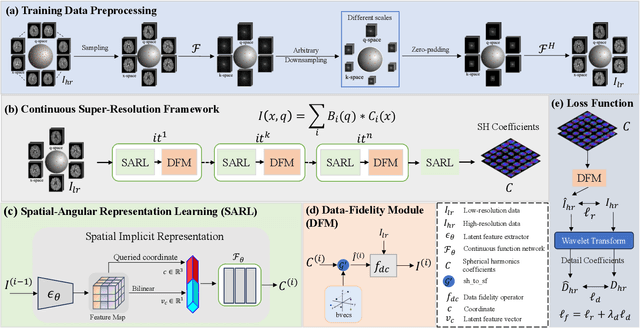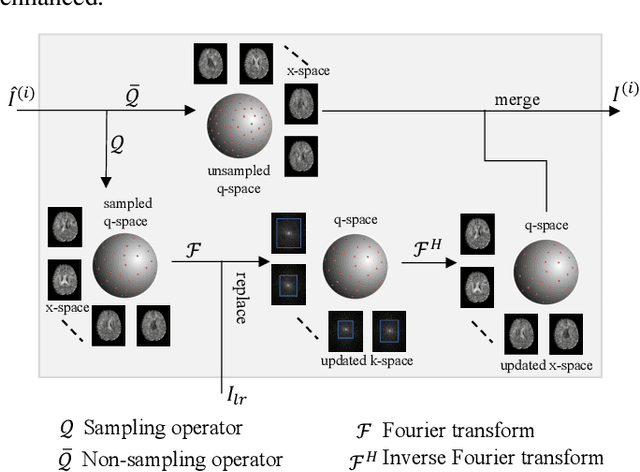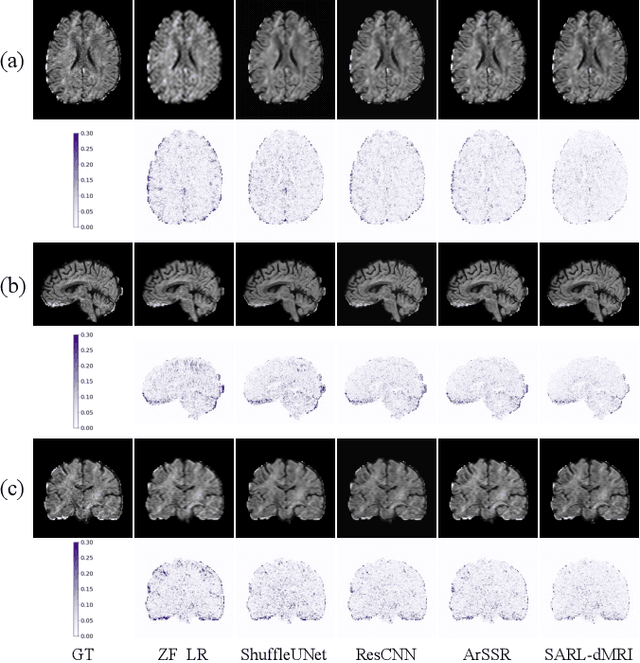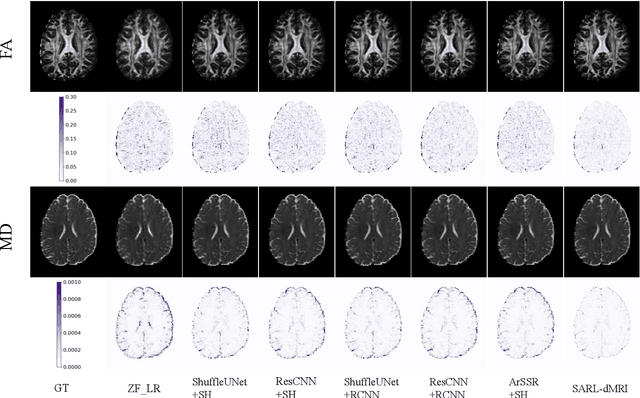Shanshan Wang
Shenzhen Institute of Advanced Technology, Chinese Academy of Sciences, Shenzhen, China, Peng Cheng Laboratory, Shenzhen, China
Learning to Select MCP Algorithms: From Traditional ML to Dual-Channel GAT-MLP
Aug 11, 2025Abstract:Extensive experiments and prior studies show that no single maximum clique algorithm consistently performs best across all instances, highlighting the importance of selecting suitable algorithms based on instance features. Through an extensive analysis of relevant studies, it is found that there is a lack of research work concerning algorithm selection oriented toward the Maximum Clique Problem (MCP). In this work, we propose a learning-based framework that integrates both traditional machine learning and graph neural networks to address this gap. We construct a labeled dataset by running four exact MCP algorithms on a diverse collection of graph instances, accompanied by structural and global statistical features extracted from each graph. We first evaluate four conventional classifiers: Support Vector Machine (SVM), Random Forest (RF), Decision Tree (DT), and K-Nearest Neighbors (KNN), across multiple dataset variants. Experimental results show that RF consistently shows strong performance across metrics and dataset variants, making it a reliable baseline. In addition, feature importance analysis indicates that connectivity and topological structure are strong predictors of algorithm performance. Building on these findings, we develop a dual-channel model named GAT-MLP, which combines a Graph Attention Network (GAT) for local structural encoding with a Multilayer Perceptron (MLP) for global feature modeling. The GAT-MLP model shows strong and consistent performance across all metrics. Our results highlight the effectiveness of dual-channel architectures and the promise of graph neural networks in combinatorial algorithm selection.
A Diffusion-Driven Temporal Super-Resolution and Spatial Consistency Enhancement Framework for 4D MRI imaging
Jun 09, 2025Abstract:In medical imaging, 4D MRI enables dynamic 3D visualization, yet the trade-off between spatial and temporal resolution requires prolonged scan time that can compromise temporal fidelity--especially during rapid, large-amplitude motion. Traditional approaches typically rely on registration-based interpolation to generate intermediate frames. However, these methods struggle with large deformations, resulting in misregistration, artifacts, and diminished spatial consistency. To address these challenges, we propose TSSC-Net, a novel framework that generates intermediate frames while preserving spatial consistency. To improve temporal fidelity under fast motion, our diffusion-based temporal super-resolution network generates intermediate frames using the start and end frames as key references, achieving 6x temporal super-resolution in a single inference step. Additionally, we introduce a novel tri-directional Mamba-based module that leverages long-range contextual information to effectively resolve spatial inconsistencies arising from cross-slice misalignment, thereby enhancing volumetric coherence and correcting cross-slice errors. Extensive experiments were performed on the public ACDC cardiac MRI dataset and a real-world dynamic 4D knee joint dataset. The results demonstrate that TSSC-Net can generate high-resolution dynamic MRI from fast-motion data while preserving structural fidelity and spatial consistency.
Cross-Sequence Semi-Supervised Learning for Multi-Parametric MRI-Based Visual Pathway Delineation
May 26, 2025Abstract:Accurately delineating the visual pathway (VP) is crucial for understanding the human visual system and diagnosing related disorders. Exploring multi-parametric MR imaging data has been identified as an important way to delineate VP. However, due to the complex cross-sequence relationships, existing methods cannot effectively model the complementary information from different MRI sequences. In addition, these existing methods heavily rely on large training data with labels, which is labor-intensive and time-consuming to obtain. In this work, we propose a novel semi-supervised multi-parametric feature decomposition framework for VP delineation. Specifically, a correlation-constrained feature decomposition (CFD) is designed to handle the complex cross-sequence relationships by capturing the unique characteristics of each MRI sequence and easing the multi-parametric information fusion process. Furthermore, a consistency-based sample enhancement (CSE) module is developed to address the limited labeled data issue, by generating and promoting meaningful edge information from unlabeled data. We validate our framework using two public datasets, and one in-house Multi-Shell Diffusion MRI (MDM) dataset. Experimental results demonstrate the superiority of our approach in terms of delineation performance when compared to seven state-of-the-art approaches.
TransMedSeg: A Transferable Semantic Framework for Semi-Supervised Medical Image Segmentation
May 20, 2025Abstract:Semi-supervised learning (SSL) has achieved significant progress in medical image segmentation (SSMIS) through effective utilization of limited labeled data. While current SSL methods for medical images predominantly rely on consistency regularization and pseudo-labeling, they often overlook transferable semantic relationships across different clinical domains and imaging modalities. To address this, we propose TransMedSeg, a novel transferable semantic framework for semi-supervised medical image segmentation. Our approach introduces a Transferable Semantic Augmentation (TSA) module, which implicitly enhances feature representations by aligning domain-invariant semantics through cross-domain distribution matching and intra-domain structural preservation. Specifically, TransMedSeg constructs a unified feature space where teacher network features are adaptively augmented towards student network semantics via a lightweight memory module, enabling implicit semantic transformation without explicit data generation. Interestingly, this augmentation is implicitly realized through an expected transferable cross-entropy loss computed over the augmented teacher distribution. An upper bound of the expected loss is theoretically derived and minimized during training, incurring negligible computational overhead. Extensive experiments on medical image datasets demonstrate that TransMedSeg outperforms existing semi-supervised methods, establishing a new direction for transferable representation learning in medical image analysis.
BioVFM-21M: Benchmarking and Scaling Self-Supervised Vision Foundation Models for Biomedical Image Analysis
May 14, 2025Abstract:Scaling up model and data size have demonstrated impressive performance improvement over a wide range of tasks. Despite extensive studies on scaling behaviors for general-purpose tasks, medical images exhibit substantial differences from natural data. It remains unclear the key factors in developing medical vision foundation models at scale due to the absence of an extensive understanding of scaling behavior in the medical domain. In this paper, we explored the scaling behavior across model sizes, training algorithms, data sizes, and imaging modalities in developing scalable medical vision foundation models by self-supervised learning. To support scalable pretraining, we introduce BioVFM-21M, a large-scale biomedical image dataset encompassing a wide range of biomedical image modalities and anatomies. We observed that scaling up does provide benefits but varies across tasks. Additional analysis reveals several factors correlated with scaling benefits. Finally, we propose BioVFM, a large-scale medical vision foundation model pretrained on 21 million biomedical images, which outperforms the previous state-of-the-art foundation models across 12 medical benchmarks. Our results highlight that while scaling up is beneficial for pursuing better performance, task characteristics, data diversity, pretraining methods, and computational efficiency remain critical considerations for developing scalable medical foundation models.
Intelligent4DSE: Optimizing High-Level Synthesis Design Space Exploration with Graph Neural Networks and Large Language Models
Apr 28, 2025Abstract:High-level synthesis (HLS) design space exploration (DSE) is an optimization process in electronic design automation (EDA) that systematically explores high-level design configurations to achieve Pareto-optimal hardware implementations balancing performance, area, and power (PPA). To optimize this process, HLS prediction tasks often employ message-passing neural networks (MPNNs), leveraging complex architectures to achieve high accuracy. These predictors serve as evaluators in the DSE process, effectively bypassing the time-consuming estimations traditionally required by HLS tools. However, existing models often prioritize structural complexity and minimization of training loss, overlooking task-specific characteristics. Additionally, while evolutionary algorithms are widely used in DSE, they typically require extensive domain-specific knowledge to design effective crossover and mutation operators. To address these limitations, we propose CoGNNs-LLMEA, a framework that integrates a graph neural network with task-adaptive message passing and a large language model-enhanced evolutionary algorithm. As a predictive model, CoGNNs directly leverages intermediate representations generated from source code after compiler front-end processing, enabling prediction of quality of results (QoR) without invoking HLS tools. Due to its strong adaptability to tasks, CoGNNs can be tuned to predict post-HLS and post-implementation outcomes, effectively bridging the gap between high-level abstractions and physical implementation characteristics. CoGNNs achieves state-of-the-art prediction accuracy in post-HLS QoR prediction, reducing mean prediction errors by 2.8$\times$ for latency and 3.4$\times$ for resource utilization compared to baseline models.
Inland Waterway Object Detection in Multi-environment: Dataset and Approach
Apr 07, 2025Abstract:The success of deep learning in intelligent ship visual perception relies heavily on rich image data. However, dedicated datasets for inland waterway vessels remain scarce, limiting the adaptability of visual perception systems in complex environments. Inland waterways, characterized by narrow channels, variable weather, and urban interference, pose significant challenges to object detection systems based on existing datasets. To address these issues, this paper introduces the Multi-environment Inland Waterway Vessel Dataset (MEIWVD), comprising 32,478 high-quality images from diverse scenarios, including sunny, rainy, foggy, and artificial lighting conditions. MEIWVD covers common vessel types in the Yangtze River Basin, emphasizing diversity, sample independence, environmental complexity, and multi-scale characteristics, making it a robust benchmark for vessel detection. Leveraging MEIWVD, this paper proposes a scene-guided image enhancement module to improve water surface images based on environmental conditions adaptively. Additionally, a parameter-limited dilated convolution enhances the representation of vessel features, while a multi-scale dilated residual fusion method integrates multi-scale features for better detection. Experiments show that MEIWVD provides a more rigorous benchmark for object detection algorithms, and the proposed methods significantly improve detector performance, especially in complex multi-environment scenarios.
ExposNet: A Deep Learning Framework for EMF Exposure Prediction in Complex Urban Environments
Mar 04, 2025Abstract:The prediction of the electric field (E-field) plays a crucial role in monitoring radiofrequency electromagnetic field (RF-EMF) exposure induced by cellular networks. In this paper, a deep learning framework is proposed to predict E-field levels in complex urban environments. First, the measurement campaign and publicly accessible databases used to construct the training dataset are introduced, with a detailed explanation provided on how these datasets are formulated and integrated to enhance their suitability for Convolutional Neural Networks (CNNs)-based models. Then, the proposed model, ExposNet, is presented, and its network architecture and workflow are thoroughly explained. Two variations of the network structure are proposed, and extensive experimental analyses are conducted, demonstrating that ExposNet achieves good prediction accuracy with both configurations. Furthermore, the generalization capability of the model is evaluated. The overall results indicate that, despite being trained and tested on real-world measurements, the model performs well and achieves better accuracy compared to previous studies.
3D Anatomical Structure-guided Deep Learning for Accurate Diffusion Microstructure Imaging
Feb 25, 2025Abstract:Diffusion magnetic resonance imaging (dMRI) is a crucial non-invasive technique for exploring the microstructure of the living human brain. Traditional hand-crafted and model-based tissue microstructure reconstruction methods often require extensive diffusion gradient sampling, which can be time-consuming and limits the clinical applicability of tissue microstructure information. Recent advances in deep learning have shown promise in microstructure estimation; however, accurately estimating tissue microstructure from clinically feasible dMRI scans remains challenging without appropriate constraints. This paper introduces a novel framework that achieves high-fidelity and rapid diffusion microstructure imaging by simultaneously leveraging anatomical information from macro-level priors and mutual information across parameters. This approach enhances time efficiency while maintaining accuracy in microstructure estimation. Experimental results demonstrate that our method outperforms four state-of-the-art techniques, achieving a peak signal-to-noise ratio (PSNR) of 30.51$\pm$0.58 and a structural similarity index measure (SSIM) of 0.97$\pm$0.004 in estimating parametric maps of multiple diffusion models. Notably, our method achieves a 15$\times$ acceleration compared to the dense sampling approach, which typically utilizes 270 diffusion gradients.
Spatial-Angular Representation Learning for High-Fidelity Continuous Super-Resolution in Diffusion MRI
Jan 27, 2025



Abstract:Diffusion magnetic resonance imaging (dMRI) often suffers from low spatial and angular resolution due to inherent limitations in imaging hardware and system noise, adversely affecting the accurate estimation of microstructural parameters with fine anatomical details. Deep learning-based super-resolution techniques have shown promise in enhancing dMRI resolution without increasing acquisition time. However, most existing methods are confined to either spatial or angular super-resolution, limiting their effectiveness in capturing detailed microstructural features. Furthermore, traditional pixel-wise loss functions struggle to recover intricate image details essential for high-resolution reconstruction. To address these challenges, we propose SARL-dMRI, a novel Spatial-Angular Representation Learning framework for high-fidelity, continuous super-resolution in dMRI. SARL-dMRI explores implicit neural representations and spherical harmonics to model continuous spatial and angular representations, simultaneously enhancing both spatial and angular resolution while improving microstructural parameter estimation accuracy. To further preserve image fidelity, a data-fidelity module and wavelet-based frequency loss are introduced, ensuring the super-resolved images remain consistent with the original input and retain fine details. Extensive experiments demonstrate that, compared to five other state-of-the-art methods, our method significantly enhances dMRI data resolution, improves the accuracy of microstructural parameter estimation, and provides better generalization capabilities. It maintains stable performance even under a 45$\times$ downsampling factor.
 Add to Chrome
Add to Chrome Add to Firefox
Add to Firefox Add to Edge
Add to Edge